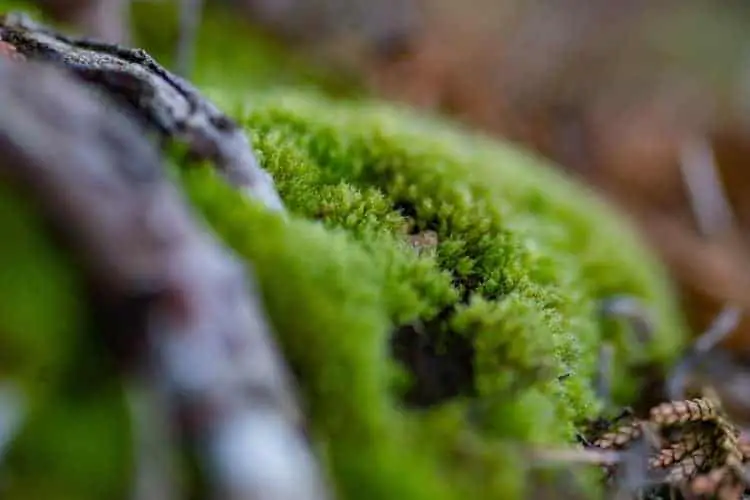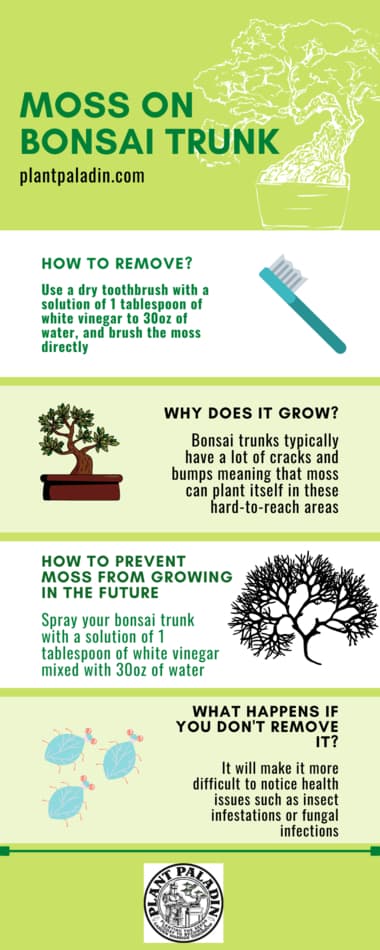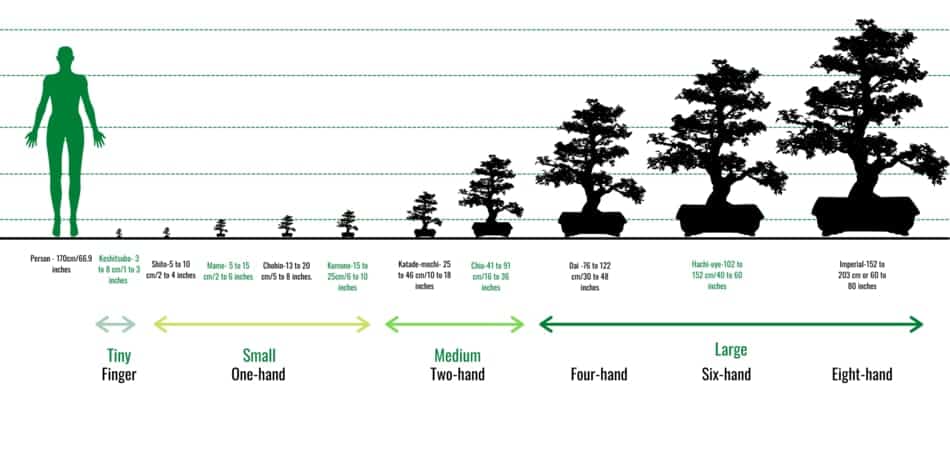This website is supported by its readers. If you click one of my links I may earn a commission. I am also a participant in the Amazon affiliates program and I will also earn a commission from qualified purchases.

So recently I’ve been experimenting with using sphagnum moss on my bonsai as a way to enhance the look of the topsoil. I’ve noticed, however, that I’ve started to grow a fair amount of moss on the trunk of my bonsai, which wasn’t exactly the look I wanted. This got me thinking – how do you get rid of moss on a bonsai trunk?
To remove moss from the trunk of your bonsai, use a dry toothbrush with a solution of 1 tablespoon of white vinegar to 30oz of water, and brush the moss directly. Alternatively, algae or moss removers can also be used, apply and after a few days peel back the excess moss with pliers.
So exactly what are the different techniques that you can use to remove moss from your bonsai? And are there any problems with leaving moss to grow on the trunk of your bonsai? Keep reading to find out more.
Just a quick heads up, over the past three years of running Plantpaladin, hundreds of people have asked for product recommendations. As such, You can find my favorite indoor bonsai tree here (link takes you to Bonsaiboy), my favorite outdoor bonsai tree (link takes you to Bonsaiboy), or have a look at all the products I recommend here.
Moss on bonsai trunk
Using moss on bonsai is one of the most effective things that you can do to make your plant aesthetically pleasing.
The whole art of bonsai is based around creating realistic miniature trees and so having moss on your tree as would occur naturally is something that a lot of world-class bonsai keepers who compete in competitions do.
Even the average hobbyists, like me and you, can benefit from applying a little moss on our bonsai (my favorite is the topsoil) however in the winter months, it becomes incredibly easy for the moss to grow and spread and it can become unmanageable.
One of the main ways in which this occurs is through overtaking the trunk of your bonsai and it’s not uncommon to leave your bonsai outdoor in the winter months only for you to check on it in spring and be covered in moss.
How to remove moss on a bonsai trunk?
Luckily in most cases, moss on bonsai trunk is super easy to remove.
I like to do the following:
- Remove by hand
- Toothbrush and water technique
- Toothbrush and vinegar solution mix
- Use algae/moss remover
To help break these down further I’ve put a table summarizing the methods used:
|
Method |
Technique |
| Remove by hands | Wear a pair of gloves. Then either by hand or using a pair of bonsai pliers carefully remove the moss for the trunk of your bonsai. |
| Toothbrush and water | Dip the head of the toothbrush in water. Then scrub the trunk gently removing the moss on the trunk of your bonsai. |
| Toothbrush and vinegar solution | Dip the head of the toothbrush in the vinegar. Then scrub the trunk gently removing the moss on the trunk of your bonsai. This should dry out the mos and help prevent it from growing back in the future. |
| Algae/moss remover | Apply the algae./moss remover. Wait a few days for the moss to run dry and brown. Then peel-off using a pair of bonsai pliers or a carving knife |
Let’s go into a little more detail on each of these methods.

Remove the moss by hand
So if you are new to bonsai and don’t have a lot of the equipment more seasons bonsai owners use such as pliers or shears then one of the best options out there is to simply remove the moss by hand.
Whilst moss might be an annoyance the good news is that it can be fairly simple to remove.
To remove then:
- Put on a pair of gloves to ensure your hands do not get infected – some algae can carry harmful bacteria so it’s important to keep the skin safe – I’d also opt for using something like goggles for this too.
- Ensure the moss is dry – wet moss will be more difficult to remove if done so by hand – I found that using a hairdryer to dry the moss first works a treat.
- Rub off the moss with a cloth – using a dry cloth, rub the moss in a clockwise motion and it should start to fall off – apply enough pressure so the moss does not come off but not so much that it could damage the trunk.
- Consider using pliers – if you do have pliers available to save a mess I would recommend using them to peel off the moss instead
- Spray with white vinegar – once all the moss has been removed – spray the trunk with white vinegar as a way to prevent the moss from growing again.
The main advantage of using this method is that it is super inexpensive and can be done pretty much by using household items around the house.
The main disadvantage however is that this can be messy, and will tire you out more quickly than if you use some of the other methods – if you do opt to use this method, ensure you have a few hours free.
Use a toothbrush and water
Probably one of the most common ways out there to remove moss on bonsai trunks is to use a toothbrush and water.
The reason toothbrushes are so commonly used is because they have the leverage to get into hard-to-reach places that spray and your hand sometimes won’t be able to reach.
This works especially well on tree species such as hawthorns that can develop loads of small cracks and bumps in the trunk of the tree.
Now when using a toothbrush to save you a lot of time I’d opt for using an electric toothbrush – this will easily remove the moss and I found that the pressure is just right as to not damage the rest of the trunk.
That being said this method can also work with using a traditional toothbrush.
To remove then:
- Fill a bowl with water – around 30oz is usually enough for most medium-sized bonsai
- Drop the brush head in the water – Ensure the water covers the bristles of the toothbrush completely
- Turn the brush on – if the brush is electric turn on if not gently start to rub the moss
- Remove the moss – rub the toothbrush in circular motions for thirty seconds and then up and down for 30 seconds – if found this works best to remove most of the moss
- Repeat – repeat the process all over the trunk of the bonsai until the moss has been removed.
The main advantage of using a toothbrush and water is that it will remove the moss from all the hard-to-reach places with the bristles able to get into the moss that can easily grow in the tiniest of cracks.
The bad news is that without using vinegar this might not be a permanent solution and so you need to apply an algae/moss removing solution afterward.
If using an electric toothbrush this can also get messy with moss flying all over the place.
Use vinegar and a toothbrush
Similar to the method above adding a bit of vinegar to the water solution (even something as small as one tablespoon) can work wonders in removing the moss from your bonsai trunk.
The vinegar will seep into all the tiny cracks that the hard-to-reach moss can grow in eliminating it via its disinfecting properties.
The process is very similar to the one laid out above but to summarize:
- Create the vinegar solution – Mix one tablespoon of white vinegar with 30oz of water – I found this to be the right amount for most medium-sized trees. If you have a larger tree then simply add another tablespoon and 30 oz of water as you get into the larger-sized bonsai.
- Drop the brush head in the water – Ensure the water covers the bristles of the toothbrush completely
- Turn the brush on – if the brush is electric turn on if not gently start to rub the moss
- Remove the moss – rub the toothbrush in circular motions for thirty seconds and then up and down for 30 seconds – if found this works best to remove most of the moss
- Repeat – repeat the process all over the trunk of the bonsai until the moss has been removed.
Now we have talked a fair bit about bonsai sizes, so if you are a little confused about the size of your bonsai, check out this post on bonsai size classification or check out the image below:
 The main advantage of using a vinegar-water solution will mean that you won’t have to worry about the moss growing back right away.
The main advantage of using a vinegar-water solution will mean that you won’t have to worry about the moss growing back right away.
Vinegar also has antifungal properties which can help reduce things like white spots from occurring on your tree as well as can be used to help prevent pests.
The main disadvantages however are that your bonsai may start to smell a little vinegar for a few days after using this method so ensure you either keep your bonsai outside or in a well-ventilated room.
Use algae or moss remover
Whilst most mosses are not algae, they do share several similar properties.
If you find that after trying all the above methods are not working or that your moss continuously grows back then it might be time to use a stronger substitute.
I found then that dedicated moss removers work best.
Any good bonsai outlet will stock algae remover but for my money, there is no better option than the Scots MossEx 3-in-1 solution (link takes you to Amazon). It; will work pretty much for all types of moss and won’t stain any surfaces you work on.
Now just keep in mind that this is a little strong for use on plants so you will want to water it down.
To use then:
- Mix 2 tablespoons of the moss remover with 30oz of water – then pour into a spray bottle.
- Spray the trunk of your tree with all the infected areas of moss.
- Leave to dry – after a few hours the moss should start to brown and dry out
- Remove the moss – with the mos dry use a pair of pliers and the moss should easily fall off.
- You can then spray the moss remover once again when dry to prevent moss from growing in the future.
The main advantage of doing this is that it will remove the moss no matter what.
The main disadvantage, however, is that because these use harsh chemicals you have to be careful. Using too much off the moss remover can damage your bonsai.
If you like the topsoil of your bonsai to also have moss, then using a chemical moss remover can also stop this.
In my option, using a moss remover should only be considered in the most extreme cases as a last resort and my recommendation would be to use other methods laid out in this post first as it can be easy to damage your tree.
What is the best method to remove moss from a bonsai trunk?
The best method to remove moss from a bonsai trunk is to mix 1 tablespoon of white vinegar with 30oz of water. Then, using an electric toothbrush brush the moss away. Using moss and algae removers whilst effective can potentially damage your bonsai so should be used as a last resort.
Why does moss grow on the bonsai trunk?
Moss typically grows on bonsai trunks because bonsai trunks typically have a lot of cracks and bumps meaning that moss can plant itself in these hard-to-reach areas. Moss also grows in wet weather and so winter conditions make it ripe to grow in northern climates.
What kind of moss grows on bonsai trunks?
The main types of moss that are grown and grow naturally on bonsai and bonsai trunks include Bryum argenteum, Other Bryum species, Ceratodon purpureus, Atrichum, Polytrichum, Thuidium, Ctenidium, Hypnum, and Sphagnum moss.
How to prevent moss from growing in the future
To prevent moss from growing on your bonsai trunk in the future, ensure you spray your bonsai trunk with a solution of 1 tablespoon of white vinegar mixed with 30oz of water. This will prevent future moss from growing. Consider winterizing your bonsai during the wet months when moss tends to flourish.
To read up more on winterizing your bonsai check out the following posts:
What happens if you don’t remove moss from your bonsai?
Failing to remove moss from bonsai trunks will make it more difficult to notice health issues such as insect infestations or fungal infections. Moss also retains water meaning your bonsai will have a higher chance of becoming overwatered or developing diseases such as root rot.
My top picks for the gear you will need!
So like I mentioned earlier, over the past three years of running PlantPaladin, hundreds of people have asked me for my recommendations on the best bonsai gear on the market.
Having spent thousands of dollars on bonsai items these past few years and tested at least 100 bonsai-specific products, I’ve listed my favorite products below – All of which I highly recommend and think you can get great value.
They can purchase directly by clicking the link to take them to Amazon.
Bonsai Tool Set: One of the significant challenges I’ve had is finding a toolset that was not only durable but didn’t break the bank. SOLIGT has recently developed a fantastic bonsai tool set that covers all the tools you need to trim, prune, and repot your trees. – You can grab it here.
Complete Bonsai Set: Many of you will want to grow your bonsai trees entirely from scratch, but finding the varicose seeds, pots, and other items in one place can be challenging. Leaves and Sole then have created a complete bonsai set that I’ve personally used that ticks all the boxes. You can grab it here.
Bonsai wire: The number of times I’ve run out of wire for my bonsai or purchased cheap bonsai wire that doesn’t do the job is embarrassing for me to admit. After a lot of trial and error, I found that using Hotop’s aluminum bonsai wire is one of the best options on the market. This can easily be used for both indoor and outdoor bonsai. You can grab it here.
This post was written by Fehed Nicass who has been passionate about bonsai for over 2 years. He currently resides in the UK and works in sales.
